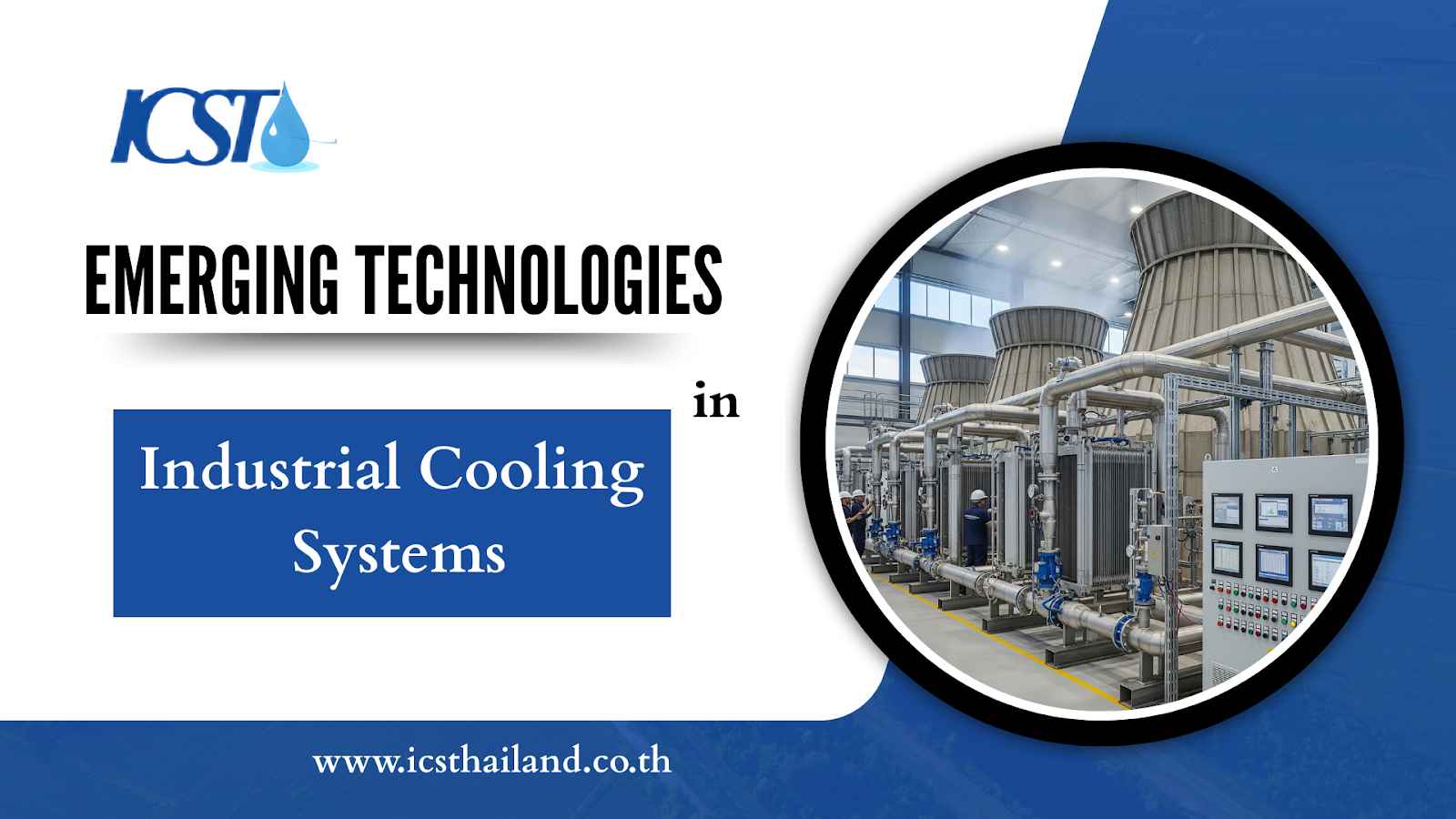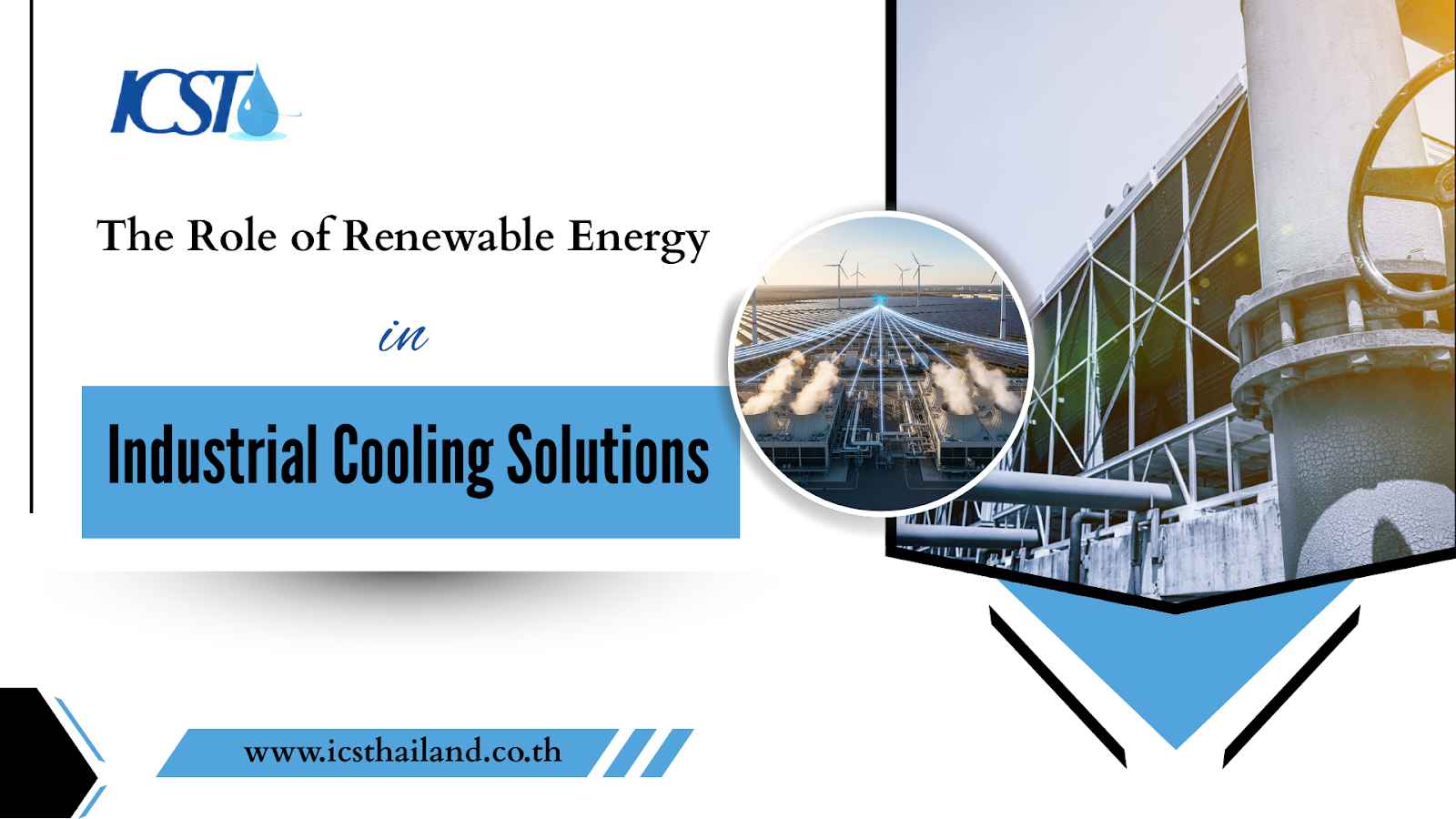Industrial cooling systems are the silent powerhouses behind numerous industries, ensuring that manufacturing lines run smoothly, chemical processes stay within safe temperatures, and equipment remains operational. These systems are indispensable in sectors like manufacturing, chemical processing, data centers, and more.
However, behind their essential functionality lies a labyrinth of engineering challenges that make the design and installation of industrial cooling systems a complex feat. Far from straightforward, each system must be meticulously designed and tailored to meet the unique demands of the facility it serves.
What’s more, industrial environments inherently bring significant engineering hurdles due to their scale, the precision required, and factors like energy efficiency and safety. This blog dives deep into the key challenges encountered during the installation of industrial cooling systems and presents the best practices and engineering solutions used to overcome them.
Table of Contents
TogglePre-Installation Engineering Challenges
The journey to a successful industrial cooling system begins long before any equipment arrives on site. The design and planning stage is where the most significant engineering challenges begin to surface.
The Elusive Heat Load Calculation & Analysis
The Difficulty
Calculating the heat load of a facility is far from simple. It requires accounting for numerous variables, such as fluctuating process heat levels, ambient conditions that vary throughout the year, equipment heat signatures, and latent versus sensible heat. Additionally, many facilities may not have accurate or complete data for their operations. Future expansion plans, if not considered during this phase, can lead to major missteps as well.
Consequences
Miscalculation here is costly. An undersized system leads to overheating, production bottlenecks, equipment damage, and ultimately, system breakdowns. Conversely, an oversized system results in unnecessary capital expenditure, wasted energy, and inefficient operation over its lifespan.
Engineering Approach to Overcome
- Utilize specialized thermal engineering software for heat load calculations.
- Deploy experienced engineers to conduct detailed site surveys.
- Perform iterative calculations to ensure accuracy.
- Engage in scenario planning to account for future needs.
Navigating Restrictive Space Constraints & Layout Optimization
Industrial facilities are rarely blank canvases. Integrating a new, large cooling system into an existing operational environment presents significant spatial challenges.
The Difficulty
Existing infrastructure—columns, pipe racks, conduits, active production lines, and tight operational corridors—makes equipment placement feel like a complex jigsaw puzzle. Limited floor space and strict access requirements for maintenance and other processes further complicate matters.
Consequences
Poor layout optimization can compromise airflow, create unsafe working conditions, reduce efficiency, and make maintenance nearly impossible.
Engineering Approach to Overcome
- Utilize 3D modeling and Building Information Modeling (BIM) to thoroughly assess and analyze layouts.
- Leverage Computational Fluid Dynamics (CFD) analysis to enhance and refine airflow efficiency.
- Design modular equipment tailored to fit the constraints of the space.
Battling Corrosion and Material Compatibility
The harsh realities of industrial environments pose a constant threat to the integrity and lifespan of cooling systems.
The Difficulty
Industrial environments are often harsh, exposing cooling systems to high humidity, varying water qualities, chemicals, and temperature extremes. Corrosion becomes a constant threat, especially in environments with hard water or contaminants.
Consequences
Unchecked corrosion can lead to premature equipment failure, leaks, and a reduced lifespan for the cooling system. This not only incurs high repair and replacement costs but could also pose environmental hazards.
Engineering Approach to Overcome
- Select corrosion-resistant materials, such as specialized stainless steel or non-ferrous alloys.
- Incorporate advanced coatings to protect vulnerable components..
On-Site Installation Engineering Challenges
Once the design is complete, the physical installation presents its own set of formidable engineering and logistical challenges.
4. Managing Complex Logistics & Heavy Equipment Handling
The Difficulty
Transporting and accurately installing massive cooling components in operational industrial sites is a high-stakes challenge.
Consequences
Errors here lead to significant project delays, costly damage to high-value equipment, severe safety incidents for personnel, and disruptive impacts on ongoing plant operations.
Engineering Approach to Overcome
- Develop detailed logistical plans and safety protocols.
- Use specialized rigging and lifting equipment.
- Prefabricate components wherever possible to reduce on-site handling.
- Rely on expert technicians trained in heavy equipment management.
Seamless Integration with Existing Plant Systems
A new cooling system doesn’t operate in isolation; it must become a harmonious part of the broader industrial ecosystem.
The Difficulty
Connecting the new cooling system to diverse existing plant infrastructure—including HVAC systems, various process control systems (PLC/DCS), SCADA, and building management systems (BMS)—is often challenging.
These existing systems frequently operate on different communication protocols, older technologies, or custom software, making seamless communication difficult.
Consequences
Integration challenges can cause communication failures, inefficiencies, or even operational shutdowns if central monitoring cannot be established.
Engineering Approach to Overcome
- Leverage expertise in various communication protocols and system architectures.
- Design robust and custom software for smooth integration.
- Conduct factory acceptance tests (FAT) and site acceptance tests (SAT) prior to full deployment.
Precision in Piping & Ductwork Fabrication
The networks of pipes and ducts are the lifelines of any cooling system, and their precise installation is critical.
The Difficulty
The extensive piping and ductwork networks required for refrigerants, glycol, and air must account for pressure drops, thermal expansion, vibration, and precise routing around pre-existing structures.
Consequences
Errors can lead to inefficient fluid/air flow, significant energy losses, persistent leaks causing damage, excessive noise, structural stress on the system, and ultimately, failure to meet required cooling capacities.
Engineering Approach to Overcome
- Conduct thorough hydraulic and aerodynamic calculations.
- Use stress analysis to design robust systems.
- Employ advanced welding techniques and proper insulation.
- Conduct rigorous quality checks at every stage.
Adhering to Stringent Safety & Regulatory Compliance
The Difficulty
Industrial cooling installations must comply with local safety regulations, building codes, and international standards (e.g., ISO, ASHRAE). Handling hazardous refrigerants or operating in confined spaces significantly heightens the level of risk.
Consequences
Non-compliance or safety oversights can lead to severe fines, significant legal liabilities, project delays or shutdowns, serious safety incidents (injuries, fatalities), environmental damage, and profound reputational harm.
Engineering Approach to Overcome
- Conduct comprehensive risk assessments.
- Train personnel to meet and exceed certification standards.
- Perform continuous safety audits and preemptive compliance checks.
Post-Installation Engineering Challenges
The work isn’t over once the last bolt is tightened. Ensuring long-term performance and reliability presents its own set of engineering challenges.
The Intricacies of Commissioning & Performance Validation
The Difficulty
Commissioning a large cooling system isn’t as simple as flipping a switch. Fine-tuning the system to meet design specs and validating its performance under different conditions requires deep expertise.
Consequences
Incomplete or faulty commissioning leads to suboptimal performance, persistent operational issues, and a failure to meet guaranteed efficiencies, ultimately impacting the return on investment.
Engineering Approach to Overcome
- Execute phased commissioning plans.
- Conduct detailed testing protocols, such as functional performance tests.
- Monitor and log performance data to refine settings.
Sustaining Long-Term Reliability and Maintenance
A cooling system is a long-term investment, and its longevity depends on effective design for maintainability.
The Difficulty
Cooling systems need to withstand tough conditions while delivering consistent performance. Predicting maintenance needs and ensuring durability can be daunting in such dynamically demanding scenarios.
Consequences
Neglecting this leads to frequent, unexpected breakdowns, escalating maintenance costs, significant unplanned downtime impacting production, premature system degradation, and a reduced return on investment.
Engineering Approach to Overcome
- Use predictive IoT sensors to anticipate failures.
- Select durable materials for high-wear components.
- Design modular systems for easier component replacement.
Specialized Considerations in Industrial Cooling
Beyond the core challenges of installation, there are specific engineering considerations that significantly impact system performance and longevity.
Heat Exchanger Selection
Choosing the right heat exchanger is a key step in designing an efficient cooling system. This process requires careful consideration to ensure the selected type and size align with the specific application.
- Shell and tube heat exchangers
- Plate and frame heat exchangers
- Air-cooled heat exchangers
The selection should be based on crucial factors such as heat transfer requirements, permissible pressure drop, and essential corrosion resistance. Heat exchangers play a crucial role in cooling systems, and their proper selection can significantly impact the efficiency and performance of the entire system.
Evaporative Cooling
These systems are frequently utilized across a wide range of industrial applications, such as:
- Cooling towers
- Evaporative condensers
- Air washers
Evaporative cooling systems offer several advantages, such as high heat transfer rates, low energy consumption, and low capital costs. However, they also come with disadvantages, including high water consumption, the potential for scaling and corrosion due to water mineral content, and a risk of biological growth (e.g., Legionella).
Air Quality Considerations
Air quality considerations are an important aspect of industrial cooling system design and operation. These involve implementing various strategies to minimize the cooling system’s impact on both indoor and outdoor air quality. When designing, it’s important to take into account factors such as:
- Particulate matter
- Nitrogen oxides (NOx)
- Volatile organic compounds (VOCs)
The cooling system’s design should include features like air filters, scrubbers, and electrostatic precipitators to minimize air pollution. Air quality monitoring should be done regularly to ensure compliance with environmental regulations and prevent issues.
How ICS Thailand Addresses These Engineering Challenges
At ICS Thailand, we understand that industrial cooling system installation is an engineering feat. We tackle these complex challenges head-on, leveraging our expertise and integrated approach to deliver superior solutions.
- Our Expertise in Problem Solving: We directly address the intricate challenges discussed, bringing deep understanding and extensive experience to every project.
- Integrated Design & Engineering: Our capabilities span advanced heat load calculations, utilizing 3D/BIM modeling for optimal spatial planning, and developing customized system designs precisely tailored to your unique industrial needs.
- Precision Installation & Project Management: We pride ourselves on our logistical prowess, strict adherence to safety protocols, and the deployment of highly skilled, certified installation teams who ensure seamless, on-time execution.
- Advanced Control Systems & Optimization: Our experts excel at integrating, programming, and fine-tuning complex control systems for maximum energy efficiency, unwavering reliability, and comprehensive remote monitoring capabilities.
- Commitment to Client Success: We focus on delivering long-term value, ensuring system reliability, providing thorough training for your team, and offering comprehensive after-sales support and maintenance services.
Conclusion
Industrial cooling systems are essential components in modern industrial operations, but their successful installation requires overcoming numerous engineering challenges. From precise heat load calculations to long-term maintenance planning, every stage demands specialized expertise and careful attention to detail.
To achieve seamless installations, industries must partner with professionals who bring robust solutions, advanced tools, and a commitment to operational efficiency. By employing expert strategies, businesses can not only optimize their cooling systems but also secure long-term reliability and sustainability.
Get in touch with ICS Thailand today and partner with a reliable leader in industrial cooling solutions.








